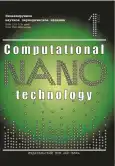Analysis of Performance and Features of the Functioning of Microfrontends
- Autores: Yudin A.V.1, Makievskiy S.E.1, Adyshkin S.S.1, Grosheva P.Y.1
-
Afiliações:
- MIREA – Russian Technological University
- Edição: Volume 11, Nº 1 (2024)
- Páginas: 25-35
- Seção: MATHEMATICAL MODELING, NUMERICAL METHODS AND COMPLEX PROGRAMS
- URL: https://journals.eco-vector.com/2313-223X/article/view/631116
- DOI: https://doi.org/10.33693/2313-223X-2024-11-1-25-35
- ID: 631116
Citar
Texto integral
Resumo
Microfrontends represent a trend in the development of the visible part of a web application (frontend), which consists in breaking a monolithic application into separate, semantically independent blocks, developed independently of each other. Each component of a web page or application operates according to specially designed logic, and each of them can be developed, tested and deployed as a standalone application. The main goal of this approach is to facilitate the support and development of large applications that are worked on by different teams. Dividing large projects (“monoliths”) into smaller components has become a traditional approach to reducing the complexity of developing and maintaining software systems. The article examines the features of microfrontends, presents the results of an analysis of the performance of the most popular frameworks for creating microfrontends, and also identifies the features of the microfrontend development team.
Texto integral
Sobre autores
Alexander Yudin
MIREA – Russian Technological University
Autor responsável pela correspondência
Email: yudin_a@mirea.ru
Dr. Sci. (Econ.), Cand. Sci. (Phys.-Math.), associate professor, Department of Enterprise Programming, Institute of Advanced Technologies and Industrial Programming
Rússia, MoscowStanislav Makievskiy
MIREA – Russian Technological University
Email: makievskij@mirea.ru
assistant, Department of Enterprise Programming, Institute of Advanced Technologies and Industrial Programming
Rússia, MoscowSergey Adyshkin
MIREA – Russian Technological University
Email: adyshkin@mirea.ru
lecturer, Department of Enterprise Programming, Institute of Advanced Technologies and Industrial Programming
Rússia, MoscowPolina Grosheva
MIREA – Russian Technological University
Email: grosheva@mirea.ru
ORCID ID: 0000-0001-7546-6903
Cand. Sci. (Econ.), associate professor, Department of Enterprise Programming, Institute of Advanced Technologies and Industrial Programming
Rússia, MoscowBibliografia
- Brito M., Cunha J., Saraiva J. Identification of microservices from monolithic applications through topic modelling. In: Proceedings of the 36th Annual ACM Symposium on Applied Computing, SAC’21. Association for Computing Machinery. New York, NY, USA, 2021. Pp. 1409–1418. doi: 10.1145/3412841.3442016
- Bucchiarone A., Dragoni N., Dustdar S. et al. From monolithic to microservices: An experience report from the banking domain. IEEE Softw. 2018. No. 35. Pp. 50–55. doi: 10.1109/MS.2018.2141026.
- Capuano R., Muccini H. A systematic literature review on migration to microservices: A quality attributes perspective. In: IEEE 19th International Conference on Software Architecture Companion, ICSA Companion 2022. Honolulu, HI, USA, March 12–15, 2022. IEEE, 2022. Pp. 120–123. URL: https://doi.org/10.1109/ICSA-C54293.2022.00030
- Conway M.E. How do committees invent? Datamation. 1967.
- Männistö J., Tuovinen A., Raatikainen M. Experiences on a framework less micro-frontend architecture in a small organization. In: IEEE 20th International Conference on Software Architecture Companion (ICSA-C). 2023. Pp. 61–67. doi: 10.1109/ICSA-C57050.2023.00025.
- Newman S. Building microservices. Sebastopol, CA: O’Reilly Media, Inc., 2015.
- Nishizu Yu., Kamina T. Implementing micro frontends using signal-based web components. Journal of Information Processing. 2022. Issue 30. Pp. 505–512. doi: 10.2197/ipsjjip.30.505.
- Peltonen S., Mezzalira L., Taibi D. Motivations, benefits, and issues for adopting micro-frontends: A multivocal literature review. Information and Software Technology. 2021. doi: 10.1016/j.infsof.2021.106571.
- Taibi D., Mezzalira L. Micro-frontends: Principles, implementations, and pitfalls. ACM SIGSOFT Software Engineering Notes. 2022. Issue 47. Pp. 25–29. doi: 10.1145/3561846.3561853.
- Wang D., Yang D., Zhou H. et al A novel application of educational management information system based on micro frontends. Procedia Computer Science. 2020. Issue 176. Pp. 1567–1576. doi: 10.1016/j.procs.2020.09.168.
- Wanjala S. A framework for implementing micro frontend architecture. International Journal of Web Engineering and Technology. 2022. DOI: 17.337.10.1504/IJWET.2022.10054340.
- Zhou J., Yang L., Wu J. Micro-frontend architecture base. In: 6th International Conference on Computer Information Science and Application Technology (CISAT 2023). 2023. DOI: 37.10.1117/12.3003818.
- Vershinin E.V., Polyakov R.A., Isaev A.B.U. Techniques for implementing links between parts of an information system with micro frontend architecture. Electronic Journal: Science, Technology and Education. 2022. No. 3 (38). Pp. 15–19. (In Rus.)
- Gamma E., Helm R., Johnson R., Vlissides J. Techniques of object-oriented design. Design patterns. St. Petersburg: Piter, 2001.
- Kim P.E., Kashapov K.G., Golikova E.A. Comparison of tools for the implementation of micro-frontends (microservices) with integration during the assembly of SPA web applications. Scientific and Technical Innovations and Web Technologies. 2023. No. 2. Pp. 33–38. (In Rus.)
- Meyer B. Object-oriented design of software systems. Transl. from English. Moscow: Russian Edition, 2005.
- Prokofiev A.P. Features of microfrontend architecture. Innovations. Science. Education. 2022. No. 50. Pp. 2126–2132. (In Rus.)
Arquivos suplementares















